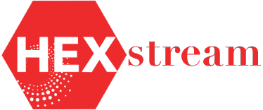The Distributed Energy Resource Management System: Optimizing DERMS At Your Utility
We frequently hear about DERMS in the utility space, but some of us don't have a full grasp on the capabilities and wins related to Distributed Energy Resource Management Systems. Here we chat with our Swathi Ambati, HEXstream data solutions engineer, to address those issues. Take a look...
HEXstream: What is DERMS?
Swathi: A Distributed Energy Resource Management System (DERMS) is an advanced software platform that enables electric utilities to monitor, control, optimize and orchestrate distributed energy resources (DERs)—such as rooftop solar, battery energy storage, electric vehicles (EVs), smart thermostats, and controllable load devices—at both the grid edge and system-wide levels.
It provides situational awareness and automated control to maintain grid reliability, support load-balancing, and participate in wholesale and retail market programs.
HEXstream: Who is DERMS built for?
Swathi: Let's consider the DERMS project currently in progress; Oracle and HEXstream are partnering on an implementation for Nevada Energy. HEXstream is focused on custom report development with the goal of modernizing their demand-response programs and distributed-energy resource operations.
HEXstream: What problems does DERMS solve, and what benefits does it provide?
Swathi: The solution offers a wide range of functionalities, including:
- Creating and managing demand-response programs
- Migrating data from existing legacy systems
- Handling new program registrations
- Supporting customer inquiries related to DER programs
- Managing CSR (Customer Service Representative) and self-service workflows
- Coordinating service requests and appointment scheduling
- Integrating with third-party field service providers
- Tracking and managing field device inventory and lifecycles
- Enforcing program rules, device capabilities and contracts
- Recording event and device-participation histories
- Supplying per-device control scores to the Network Management System (NMS) for day-ahead scheduling
- Providing settlement data for billing purposes
HEXstream: How is this DERMS different from other solutions?
Swathi: The DERMS solution leverages DACS, which acts as the core engine to create, manage and optimize demand response and distributed-energy programs. Unlike other solutions, it offers truly integrated and end-to-end DER management experience, driving both operational efficiency and compliance.
HEXstream: What environmental, regulatory, financial, and customer factors are influencing DERMS adoption?
Swathi: Several evolving conditions make DERMS more attractive to utilities:
- Environmental: Growing climate concerns and renewable-energy targets
- Regulatory: Compliance with clean-energy mandates and grid-reliability standards
- Financial: Incentives for DER participation and operational cost savings
- Customer Expectations: Demand for energy choice, transparency and control
- Electric Vehicles (EVs): Increasing EV adoption that necessitates grid flexibility and localized energy management
HEXstream: What reporting capabilities are built into the DERMS solution?
Swathi: Based on Nevada Energy's requirements, the reporting framework is structured around three key areas—Program Management, Field Service Organization, and NMS Forecast. Key capabilities include:
- Dashboards and reports to track:
- Number of customers and devices enrolled
- Attrition rates
- Program performance over time
- Data visualizations to assist with customer targeting and marketing
- Historical and forecast data for individual DER participants
- Pre-built field service operation reports
- Asset-search functionality by parameters like device type
HEXstream: How might DERMS evolve over the next decade?
Swathi: In the next 10 years, DERMS will likely evolve to support:
- Real-time grid optimization using AI/ML
- Full-scale integration with smart home ecosystems
- Autonomous grid response to extreme weather or high demand
- Personalized energy insights for consumers
- Advanced analytics and predictive forecasting
- Seamless participation in energy markets by individual prosumers
WANT MORE? CLICK HERE TO CONNECT WITH US TO EXPLORE HOW TO OPTIMIZE DERMS AT YOUR UTILITY.
